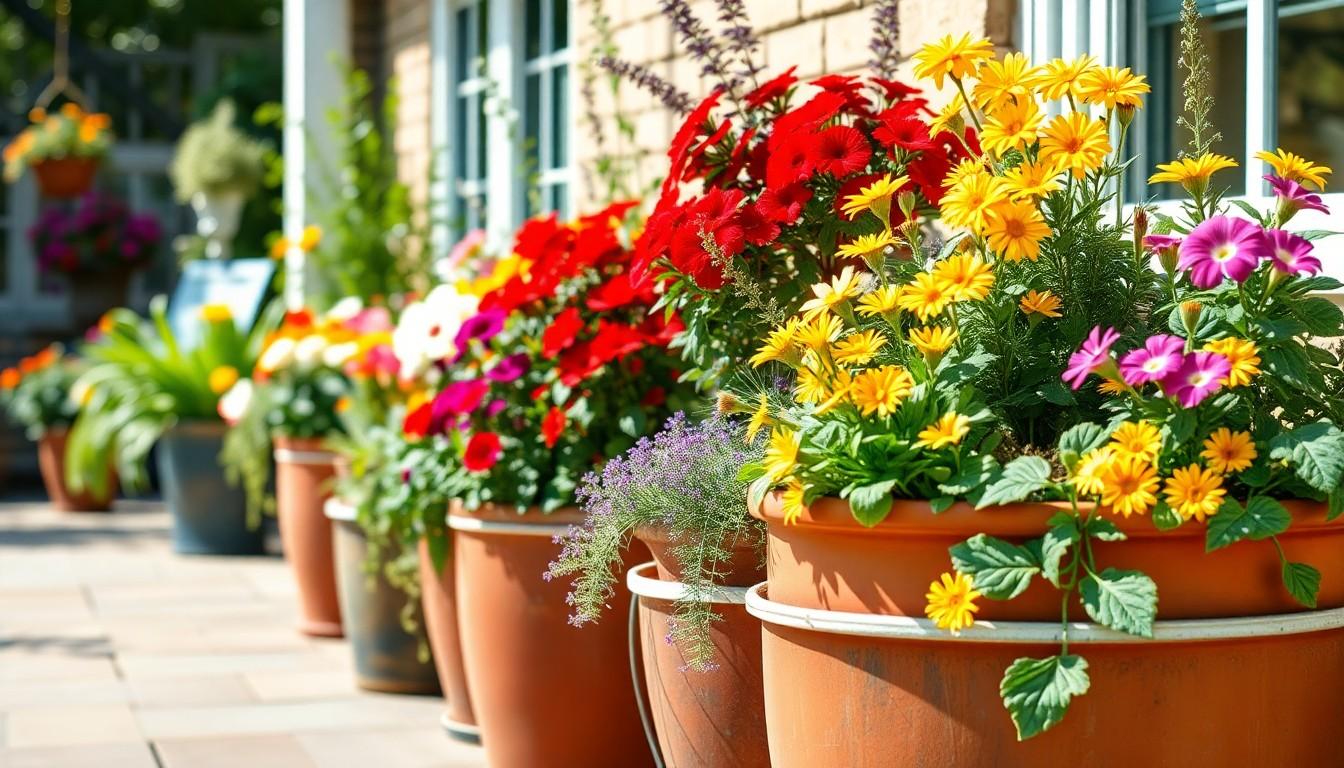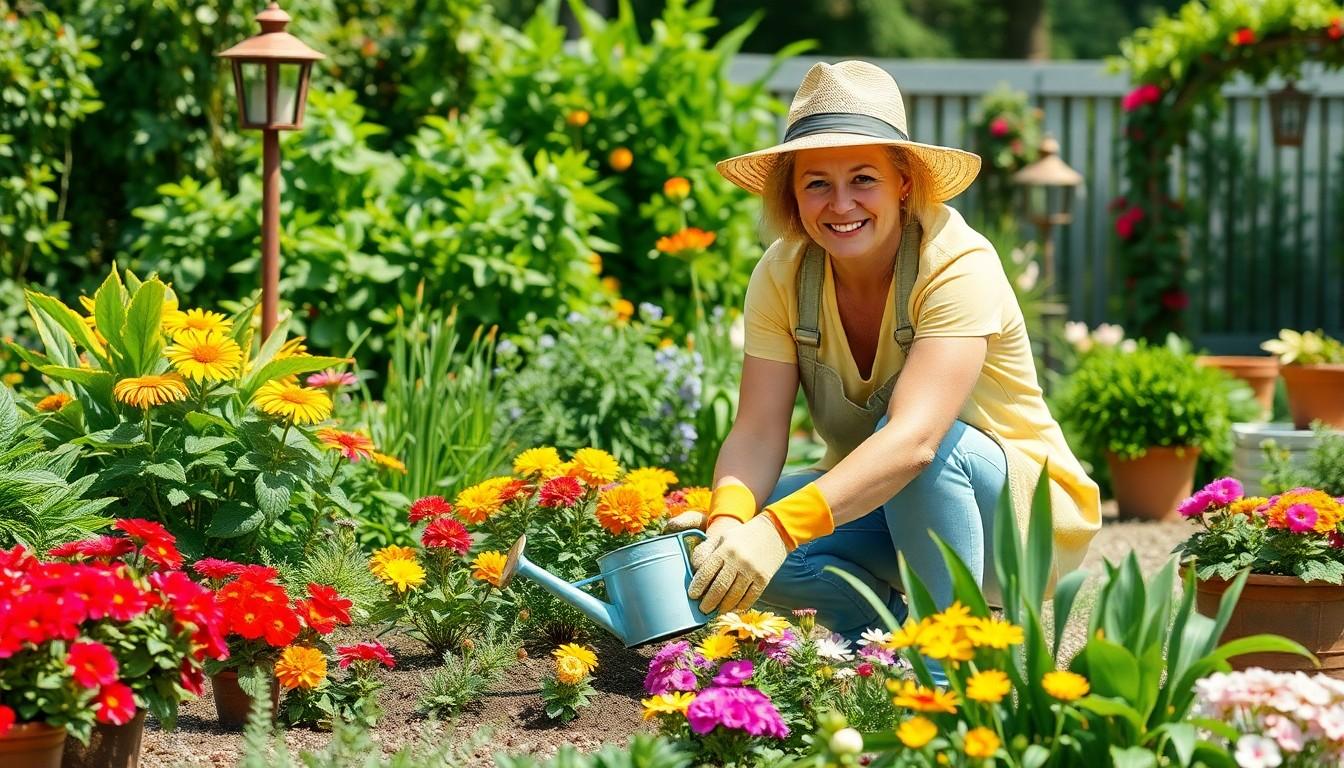Transforming a garden into a vibrant oasis doesn’t require a degree in horticulture or a magic wand. With the right tips and a sprinkle of creativity, anyone can cultivate a stunning outdoor space that rivals the best botanical gardens. Whether it’s a cozy balcony or a sprawling backyard, the possibilities are endless.
Essential Garden Tips
Creating a beautiful garden involves some smart choices and an understanding of the environment. The right plants and soil will play crucial roles in crafting an inviting outdoor space.
Choosing the Right Plants
Selecting suitable plants is vital for success in gardening. Consider climate zones; plants thrive in environments suited to their native conditions. Assess sunlight levels in the garden; some plants flourish in full sun while others prefer shade. Incorporate a mix of perennials and annuals for year-round aesthetics. Furthermore, native plants often require less maintenance and provide habitat for local wildlife. Finally, group plants with similar water requirements together to ensure efficient watering practices.
Understanding Soil Types
Soil is the foundation for any garden project. Test garden soil to determine its pH and nutrient levels. Healthy soil typically has a balanced mix of sand, silt, and clay, impacting drainage and root development. Amend soil with organic matter like compost to enhance its structure and fertility. Consider using raised beds if dealing with poor soil quality; these can improve drainage and soil temperature. Lastly, proper watering techniques are essential; too much moisture can lead to root rot, while insufficient water can stress plants.
Creative Decor Ideas

Creative decor can enhance the aesthetic of any garden space. Incorporating unique elements makes the garden inviting.
Container Gardening
Container gardening offers flexibility in design and plant selection. Use different materials like terracotta, metal, or recycled items for containers. Arrange them at varying heights to create visual interest. Choose plants that complement each other, such as colorful annuals paired with hardy perennials. Incorporating herbs adds both fragrance and functionality. Position containers near patios or walkways for easy access and interaction.
Vertical Gardens
Vertical gardens maximize space and add greenery to walls. Install wall-mounted planters or trellises to display climbing plants, like ivy or morning glories. Choose a mix of leafy greens and vibrant flowers for texture. Create a living wall by combining succulents in a variety of colors and shapes; this adds a unique focal point. Use vertical structures to provide shade and reduce heat in outdoor seating areas.
Maintenance Practices
Maintaining a garden requires attention to essential practices. Implementing effective techniques ensures health and vitality in outdoor spaces.
Watering Techniques
Watering practices significantly impact plant health. Early mornings present ideal conditions for watering, as evaporation rates are lower, allowing moisture to penetrate the soil effectively. Deep watering encourages root development, making plants more resilient. Utilizing drip irrigation systems can save water while providing targeted moisture directly to the roots. Adjusting watering frequency based on rainfall prevents overwatering or underwatering issues. Testing soil moisture with a simple finger test offers insight into watering needs. Recognizing signs of thirsty plants, like wilting or yellowing leaves, assists in timely interventions.
Pest Management
Effective pest management protects garden plants from unwanted guests. Regularly inspecting plants for signs of damage or pests promotes early detection. Introducing beneficial insects, such as ladybugs or lacewings, naturally controls pest populations. Planting companion plants like marigolds can repel harmful insects and enhance plant health. Utilizing organic sprays, such as neem oil, offers a safe solution for pest outbreaks. Implementing crop rotation minimizes pest occurrence by disrupting their life cycles. Maintaining garden cleanliness, including removing debris, reduces hiding spots for pests, fostering a healthier garden environment.
Seasonal Considerations
Seasonal changes influence garden planning and upkeep. Understanding these shifts enhances a garden’s beauty and health.
Spring Preparations
Spring serves as a crucial time for garden preparations. With warmer temperatures, soil becomes workable. Testing soil pH and nutrient levels promotes optimal plant growth. Selecting the right plants based on local climate ensures success. Incorporating native plants offers support for local wildlife and requires less maintenance. Finally, addressing any remaining debris or dead plants fosters a healthy environment for new growth.
Winterizing Your Garden
Winterizing a garden protects plants from harsh conditions. Before the cold sets in, mulching around perennials insulates roots and retains moisture. Pruning dead or damaged branches reduces disease risk. Covering tender plants with burlap or frost cloth safeguards them from freezing temperatures. Cleaning up fallen leaves and debris prevents pest infestations. Transitioning containers indoors ensures delicate plants thrive during colder months.
Conclusion
Transforming a garden into a stunning oasis is within reach for everyone. With the right tips and a touch of creativity, anyone can create an inviting outdoor space that reflects their personality.
By selecting the right plants and understanding their environment, individuals can ensure vibrant growth throughout the seasons. Incorporating unique decor elements and maximizing space with container and vertical gardening adds character and charm.
Regular maintenance and awareness of seasonal changes are vital for sustaining garden health. With these strategies in place, anyone can enjoy a flourishing garden that brings joy and beauty to their home.

